Flying Missions in a remote desert: In search of our ancestral trails IV
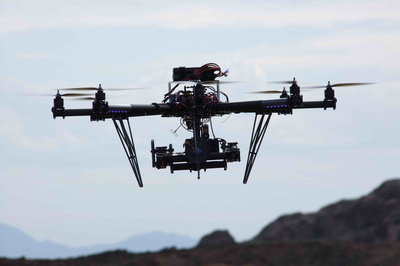
 Released from the breathtaking copter crisis which almost caused a tragic crash, we all thanked the designers of this intelligent aircraft. For our dedicated captain and pilot Gonzalo Martinez, it was his first time to experience that, too. Having the Sony NEX-7 which recorded everything in HD video, he carefully explained the causes of the crisis.
Released from the breathtaking copter crisis which almost caused a tragic crash, we all thanked the designers of this intelligent aircraft. For our dedicated captain and pilot Gonzalo Martinez, it was his first time to experience that, too. Having the Sony NEX-7 which recorded everything in HD video, he carefully explained the causes of the crisis.
From the screen, we saw all the details of the incident. First, the copter hit a current and was blown to one side with tremendous force. At that time, Gonzalo was trying to balance the copter but he simply could not. Then we saw the copter swung to its left, tilting at an angle. It was so helpless in the strong wind that it almost crashed on the cliffs, only narrowly escaped from the bushes below. Without doubt, it was the gusts that triggered the incident. When all controls failed to compensate the gales, our captain activated the automatic mode. Then the copter started to behave in a different way. It first climbed straight up to the altitude of about 100 meters and successfully got out of the turbulent! Against the headwind, it slowly came towards the hills where we stayed, and finally we had it back! How extraordinary! We were all impressed by the versatility of this machine, which enabled it to deal with such an emergency totally beyond our helps.
Although we almost lost our reliable robotic unit, we gained the HD video of the stone circles! Invaluable footage out of the adventurous flight! And it is crystal clear! A success after all!


As we talked about the incredible quest of the copter, our field leader Louise Leakey suggested that we should all go and see the stone circles, since they were not far away. Indeed, a bit of walk around this lunar landscape would be a good way to relax our over-tightening nerves. And from there, with water bottles in hand, we started our expedition through the alien terrain of Lothagam.


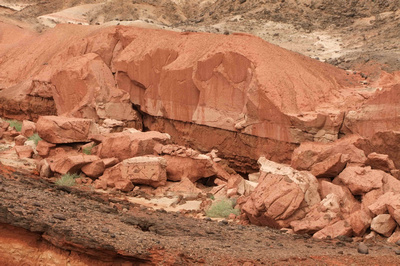

Wondering in this glorious geology museum, we were all stunned by the power of nature. Over millions of years, layers of ancient sediments have been eaten away by water and wind, leaving cracks and crevasses on the ground. Draining rains cut out even bigger channels, depositing sand and pebbles at the bottom of the valleys. The winding gorges and reddish sediments reminded Shaan Hurley, our “Minister of Cameras & Computers”, of Southern Utah in the United States.
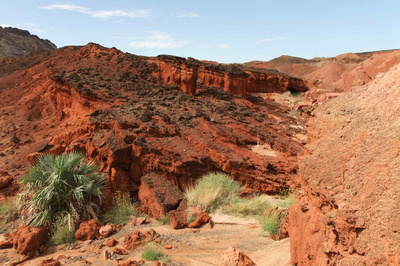

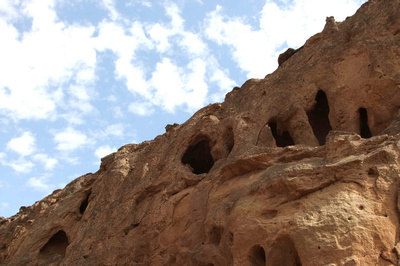

However, the seemingly barren place is not devoid of life. A few green pioneers have anchored their roots deep underground, sucking precious water avariciously. On the cliffs of sandstones, birds have claimed their presence by digging out nesting burrows, sheltered from the parching sun. The only land mammal in sight was Homo sapiens, including a few local Turkana people. It was a big surprise to see them in Lothagam, since it is far from any water source. Undoubtedly, life is tough for all who live there.
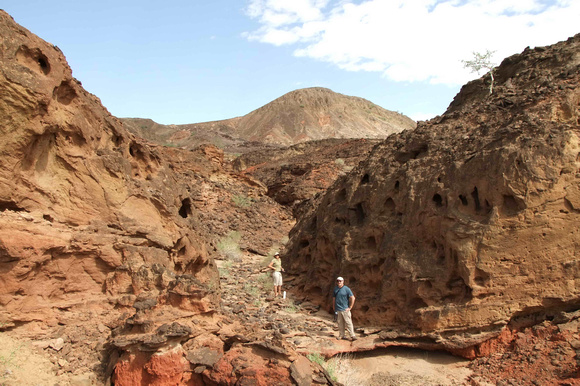

Hiking over the rugged terrain of Lothagam was a lot of fun, despite the overwhelming heat. Sometimes, getting proper footholds in loose deposits and steep slopes could be a challenge. A switch to “4-wheel-drive” might be a good idea. An interesting way to experience our connections to other land mammals, or just a new way to stretch our arms and legs…
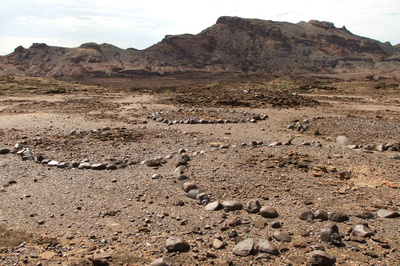

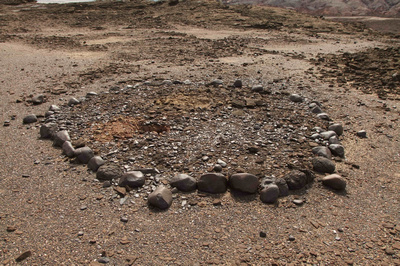

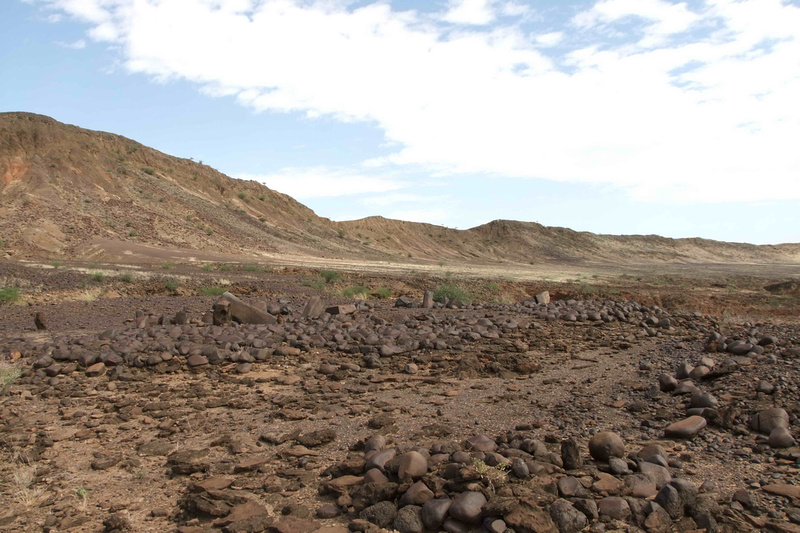

By the time we finished our exercise, we found ourselves on a relatively leveled platform overseeing the valleys. And our first sight of the ancient remains! There are several stone circles and several other flat stone mounds huddling together, ranging from about 5 to 10 meters in diameter. These stone constructions are believed to be human settlements and memorial sites about 10,000 years ago, when the lake water was about 80 meters higher than the current level, high enough to reach where we stood. This fact is crucial in understanding the context of these ancient architectures. Living at the lake shore back then, people who built these settlements would have enough resources to sustain such complex structures, both for social and cultural purposes. In the past few decades, stone tools, bone spear/harpoon heads, turtle shells and numerous fish bones have been excavated in the surrounding sediments, indicating a fishing-hunting-gathering lifestyle of these early settlers.
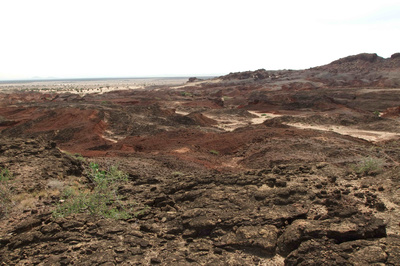

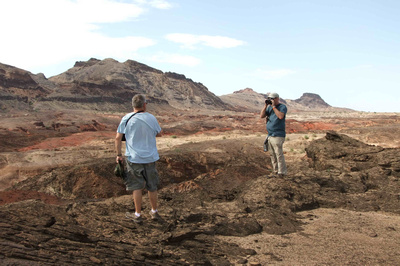

Certainly a great site for archaeologists, it is also a fantastic site for photographers! Having the grand views of valleys, outcrops and bare rock beds in our cameras was a heroic triumph! A good moment for snapshots, too, especially in the strong wind blowing from down the cliffs. There was nowhere else to enjoy such a refreshing service! Oh! Wait! That was the cause of the incident!!! :P
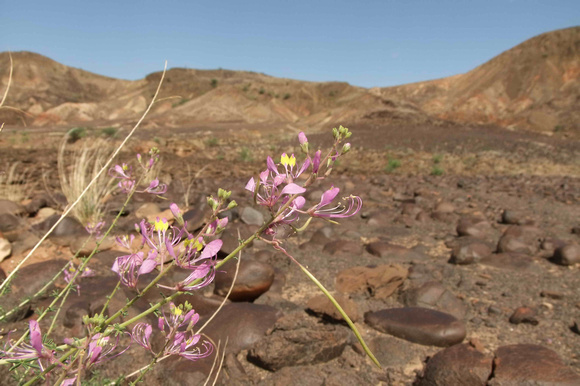

Looking at the ruins with our own eyes, our understanding of past raised to a new level. Standing on the same place where people walked, touching the same tools that they used about 10,000 years ago, we could feel the links between them and us, at least vaguely. Archaeological studies are rather like detective stories. With limited clues available, it is usually difficult to search for connections of the fragmentary past. The more evidence we have, the clearer the picture would be. And this was the ultimate goal of our visit: to add more pieces to the entire jigsaw puzzle of human origins.
With these thoughts in mind, our captain decided to take another risky move. Although the copter might not handle the gales well at the end of the platform, it could certainly fly above the circles, where the wind was relatively gentle. But the copter had to take off from where we stood, for better controls and a longer period of hovering. A new mission! To go back and bring the copter plus all gears to the circles! Not easy at all!
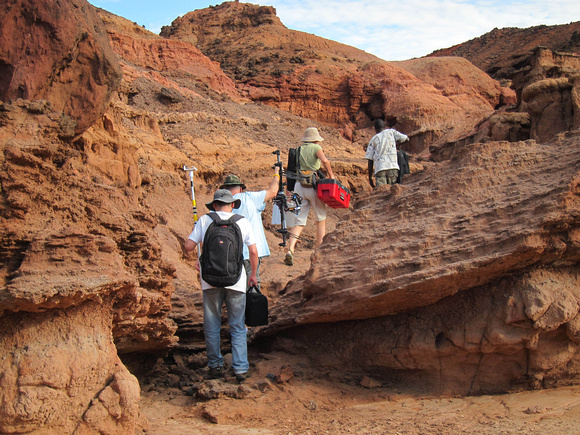

Photo courtesy of Shaan Hurley, Autodesk
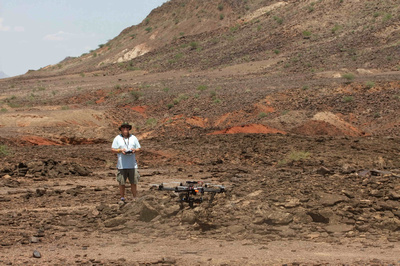

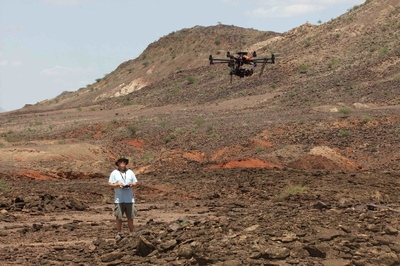

Having overcome the rough terrain, dehydration and heat almost comparable to sauna, we were back on the platform again with everything. But this time, we were going to do still images only.
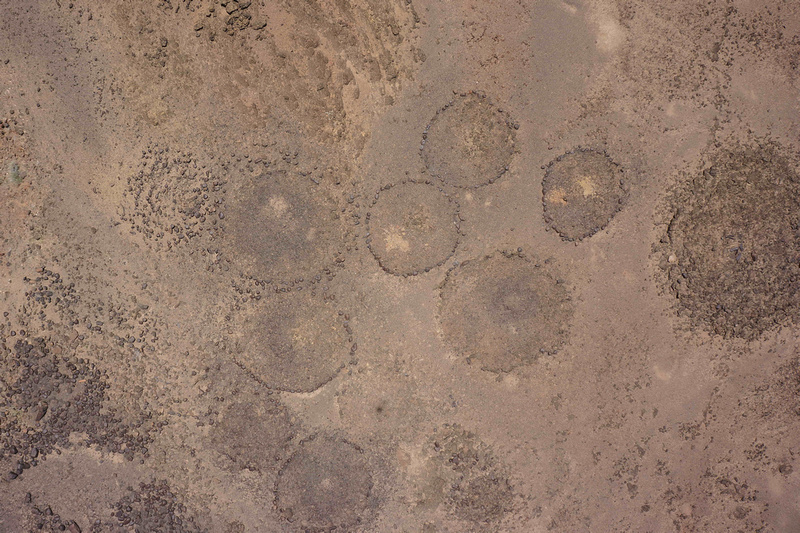

And this is one from the air! Bravo! Photo courtesy of Gonzalo Martinez, Autodesk
After all the efforts of acquiring aerial images above the stone circles, it was already one o’clock in the afternoon and the temperature was approaching 40 degrees centigrade. Exhausted and hungry from the demanding but successful missions in Lothagam, we jumped onto the vehicle and headed back to TBI Turkwel Camp, where food and drinks awaited. (To be continued)
P.S. My special thanks to all the crew members: Louise Leakey, Gonzalo Martinez, Shaan Hurley and a collection manager from TBI Turkwel (my apologies for not remembering his name), for your full support and care during the expedition.
View and download photos of this post: Lothagam Landscapes; Flying missions
Aerial Video edited by Gonzalo Martinez, taken from the copter.
Related blog posts by Shaan Hurley
For more information about the stone circles, please visit this webpage by Elisabeth Hildebrand, Stony Brook University.